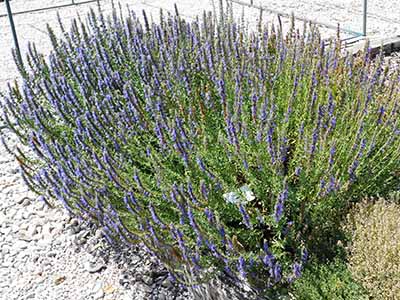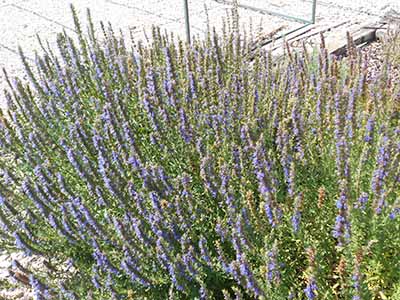Hyssopus oficinalis (Lamiaceae)


| ENG | Hyssop |
| SK | Yzop lekársky |
| CZ | Yzop lékařský |
| PL | hizop |
| HU | izsóp |
Using
Hyssop has very aromatic leaves and is commonly grown as a spice a medicinal herb. Antibacterial, antifungal and antiviral properties are the most often described for the Hyssopus officinalis essential oils. It is rich in vitamin C, about 170 mg per 100 g of fresh leaves. It is used in the pharmaceutical industry. As spice it is used for cooking meat, soup (bean and potato, for the preparation of marinades, the spicing of wines. It is also used for reinforcement of slopes.
Botanical description and occurrence
Hyssop is a genus of herbaceous or semi-woody plants in the family Lamiaceae, native from the east Mediterranean to central Asia as far east as Mongolia. Hyssopus officinalis is an evergreen shrub growing to 0.6 m by 0.6 m at a medium rate. It prefers a light, dry calcareous soil and a sunny position. A very cold-hardy plant, when dormant it can tolerate temperatures down to about -25°C.
Why to have the plant in your garden:
Worldwide hyssop has been known as a culinary and medicinal herb for hundreds of years. Hyssop is used for digestive and intestinal problems including liver and loss of appetite. It is also used for respiratory problems and urinary tract infection and menstrual cramps.
Text:
Dr. Ivana Mezeyová, SUA, Nitra, Slovak Republic
Photo:
Dr. Ivana Mezeyová, SUA, Nitra, Slovak Republic
Links to scientific articles
Zawiślak G., 2013, THE CHEMICAL COMPOSITION OF ESSENTIAL HYSSOP OIL DEPENDING ON PLANT GROWTH STAGE

